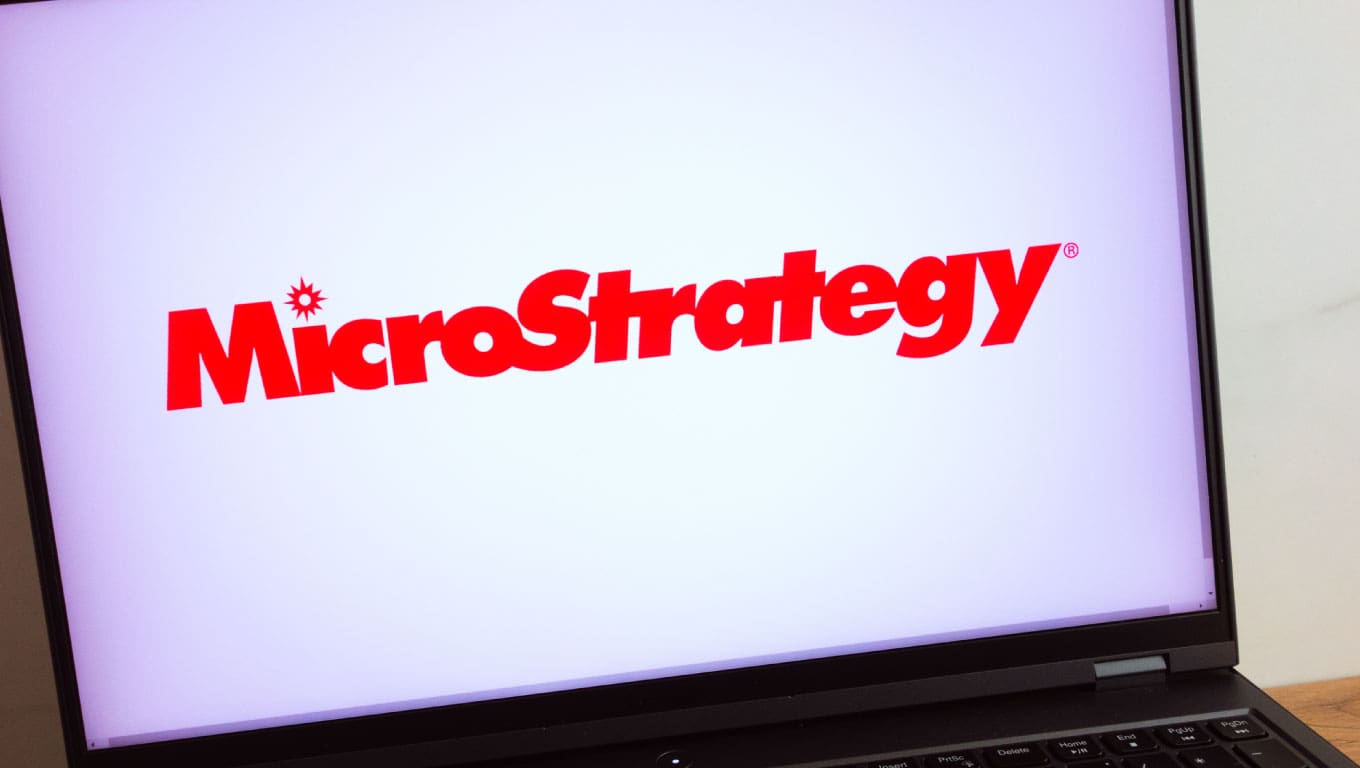Introduction to MicroStrategy
MicroStrategy and Michael J. Saylor are two hot names in the crypto environment, especially when it comes to bitcoin. Where did this connection come from? Why is this company so connected to BTC?
Given the importance of MicroStrategy (and that of the related portfolio), we wanted to devote a brief discussion to it.
First we will find out what the company’s core business is, when it was born, and what the milestones of its journey have been. After that we will move on to the relationship with bitcoin and why it is of no small importance.
Let’s start at the beginning: what is MicroStrategy?
If you want to explore further, here is also a video content updated to 2025!
Index
What is MicroStrategy?
MicroStrategy is an American company, headquartered in Virginia, that focuses on business intelligence and cloud services for enterprises. Specifically, MicroStrategy is famous for its data analysis software that enables users to make business decisions, improve and speed up certain areas, and manage data more effectively.
It was founded in 1989 at the hands of three personalities, Sanju Bansal, Thomas Spahr and Michael Saylor. The latter is the best known name in the crypto environment, but we will come back to that later.
MicroStrategy meshed right away thanks to a consulting contract obtained by Saylor himself. The client? DuPont, the well-known multinational chemical company that developed materials such as Kevlar and Lycra. The $250,000 obtained was important in getting MicroStrategy’s business off to the best possible start.
Three years later McDonald’s arrived as a client, bringing with it decidedly hefty figures: $10,000,000. The growth was significant, so much so that in less than ten years after its founding (in 1998), MicroStrategy became a public company, listed on Nasdaq.
Everything seemed bright, but there were dark moments. Being an IT startup, although it had very good software as a product, MicroStrategy suffered from the Dot-com Crisis and burned through huge amounts of capital.
Saylor and co. were able to handle the situation, however, and the company continued to structure itself. Right on time, from time to time MicroStrategy released its software that was increasingly updated, accurate, and packed with modern content and features. Today, for example, the latest version includes advanced artificial intelligence features .
Michael Saylor resigned as CEO in August 2022, later serving as Executive Chairman. Choice due, according to his statements, to the desire to focus on the company’s bitcoin investment strategy. But a completely different chapter opens here.
"MicroStrategy focuses on business intelligence and cloud services for enterprises"
MicroStrategy bitcoin
Let’s get to the heart of the matter: what does a business intelligence firm have to do with bitcoin?
Michael Saylor has always been a big fan of cryptocurrencies and blockchain, with a particular soft spot just for BTC.
MicroStrategy has over time repeatedly invested in the well-known coin precisely because the most prominent corporate figure has so much faith in this asset. The reasons for this choice are based on the desire to protect the corporate treasury from inflation and economic uncertainty.
How many bitcoins does MicroStrategy have? As of January 2025, MicroStrategy holds about 471,000 bitcoins. This is the largest ever holding at the corporate level.
A similar share of BTC makes MicroStrategy a huge whale. However, except for some sporadic sales, we have to say that the company has always tried to maintain and expand its holdings in this asset.
This is because what should be the company’s core business, namely business intelligence, does not produce the desired profits. In fact, MicroStrategy is often running at a loss. So Saylor decided to go all-in on bitcoin with a rather simple strategy: he borrows fiat currency and buys BTC; the price growth of the coin also goes to cover the interest on the loan, clearly provided it actually goes up.

Convertible bonds MicroStrategy
Let’s find out what convertible bond, the usual method used by society to buy BTC, is.
The convertible bond is a corporate bond issued by MicroStrategy and with usually zero interest rate. This last feature, were it not for the clause we will see shortly, would make MicroStrategy bonds really unattractive.
This category of bonds has a particular clause, namely that of convertibility. At maturity, the creditor will be able to:
- Re-return the capital provided to the company (unless there are dramatic events such as bankruptcy);
- Or, if in the meantime the MicroStrategy stock price is higher than a parameter (conversion price) defined at the bond issue, get a payment in shares (which tends to be very advantageous if the share has grown over time).
Worst Case scenario
As long as bitcoin continues to rise, MicroStrategy will have no problem.
The critical issues could come should BTC have a setback or go into stagnation. Therefore, the company must prepare the necessary liquidity to finance all debts and avoid panic in bearish scenarios; this will help avoid selling BTC, an action that would go on to generate distrust and a downward spiral that is difficult to stop.
The impact on cryptocurrency
MicroStrategy is not the office under the house, but a well-known and respected company with over thirty years of history behind it. Michael Saylor is an established entrepreneur who enjoys respect in institutional circles. Consequently, when two similar entities take such a firm stand on a particular asset, it is by no means ignored.
This was also the case with bitcoin, which, thanks to Saylor and MicroStrategy, gained points in leading financial circles. Not only that: more broadly, the entire crypto sector has benefited from visibility and prompted institutional players to get informed, understand how it works and identify its potential and weaknesses.
However, the business impact goes beyond corporate boundaries and touches individuals as well. Over the years, MicroStrategy has been a spokesperson for cryptocurrencies through a variety of educational initiatives, including organizing dedicated events, webinars and producing materials on the topic.
Certainly: the company has everything to gain by having such a massive stake in BTC. However, it is also through these initiatives that adoption and, more importantly, mass awareness comes through.
One of the goals that Michael Saylor and MicroStrategy are pursuing is to bring other companies and governments to invest in this cryptocurrency.
"Over the years, MicroStrategy has been a spokesperson for cryptocurrencies"
How is bitcoin doing?
We conclude with TradingView ‘s chart on the real-time trend of the BTC/USD pair. This will give you a quick view of how the note coin is moving and MicroStrategy’s profitability based on its average carrying price.

